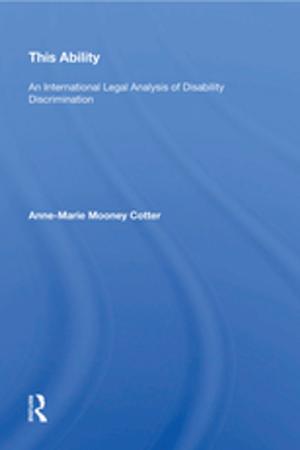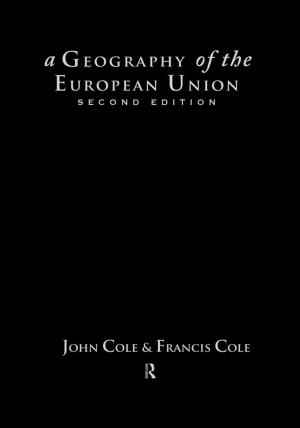A Historical Introduction to the Study of New Religious Movements
Nonfiction, Social & Cultural Studies, Social Science, Sociology, Marriage & Family, Religion & Spirituality, Reference, Comparative Religion, New Age| Author: | W. Michael Ashcraft | ISBN: | 9781351670838 |
| Publisher: | Taylor and Francis | Publication: | February 2, 2018 |
| Imprint: | Routledge | Language: | English |
| Author: | W. Michael Ashcraft |
| ISBN: | 9781351670838 |
| Publisher: | Taylor and Francis |
| Publication: | February 2, 2018 |
| Imprint: | Routledge |
| Language: | English |
The American public’s perception of New Religious Movements (NRMs) as fundamentally harmful cults stems from the "anticult" movement of the 1970s, which gave a sometimes hysterical and often distorted image of NRMs to the media. At the same time, academics pioneered a new field, studying these same NRMs from sociological and historical perspectives. They offered an interpretation that ran counter to that of the anticult movement. For these scholars in the new field of NRM studies, NRMs were legitimate religions deserving of those freedoms granted to established religions.
Those scholars in NRM studies continued to evolve methods and theories to study NRMs. This book tells their story. Each chapter begins with a biography of a key person involved in studying NRMs. The narrative unfolds chronologically, beginning with late nineteenth- and early-twentieth century perceptions of religions alternative to the mainstream. Then the focus shifts to those early efforts, in the 1960s and 1970s, to comprehend the growing phenomena of cults or NRMs using the tools of academic disciplines. The book’s midpoint is a chapter that looks closely at the scholarship of the anticult movement, and from there moves forward in time to the present, highlighting themes in the study of NRMs like violence, gender, and reflexive ethnography.
No other book has used the scholars of NRMs as the focus for a study in this way. The material in this volume is, therefore, a fascinating viewpoint from which to explore the origins of this vibrant academic community, as well as analyse the practice of Religious Studies more generally.
The American public’s perception of New Religious Movements (NRMs) as fundamentally harmful cults stems from the "anticult" movement of the 1970s, which gave a sometimes hysterical and often distorted image of NRMs to the media. At the same time, academics pioneered a new field, studying these same NRMs from sociological and historical perspectives. They offered an interpretation that ran counter to that of the anticult movement. For these scholars in the new field of NRM studies, NRMs were legitimate religions deserving of those freedoms granted to established religions.
Those scholars in NRM studies continued to evolve methods and theories to study NRMs. This book tells their story. Each chapter begins with a biography of a key person involved in studying NRMs. The narrative unfolds chronologically, beginning with late nineteenth- and early-twentieth century perceptions of religions alternative to the mainstream. Then the focus shifts to those early efforts, in the 1960s and 1970s, to comprehend the growing phenomena of cults or NRMs using the tools of academic disciplines. The book’s midpoint is a chapter that looks closely at the scholarship of the anticult movement, and from there moves forward in time to the present, highlighting themes in the study of NRMs like violence, gender, and reflexive ethnography.
No other book has used the scholars of NRMs as the focus for a study in this way. The material in this volume is, therefore, a fascinating viewpoint from which to explore the origins of this vibrant academic community, as well as analyse the practice of Religious Studies more generally.















